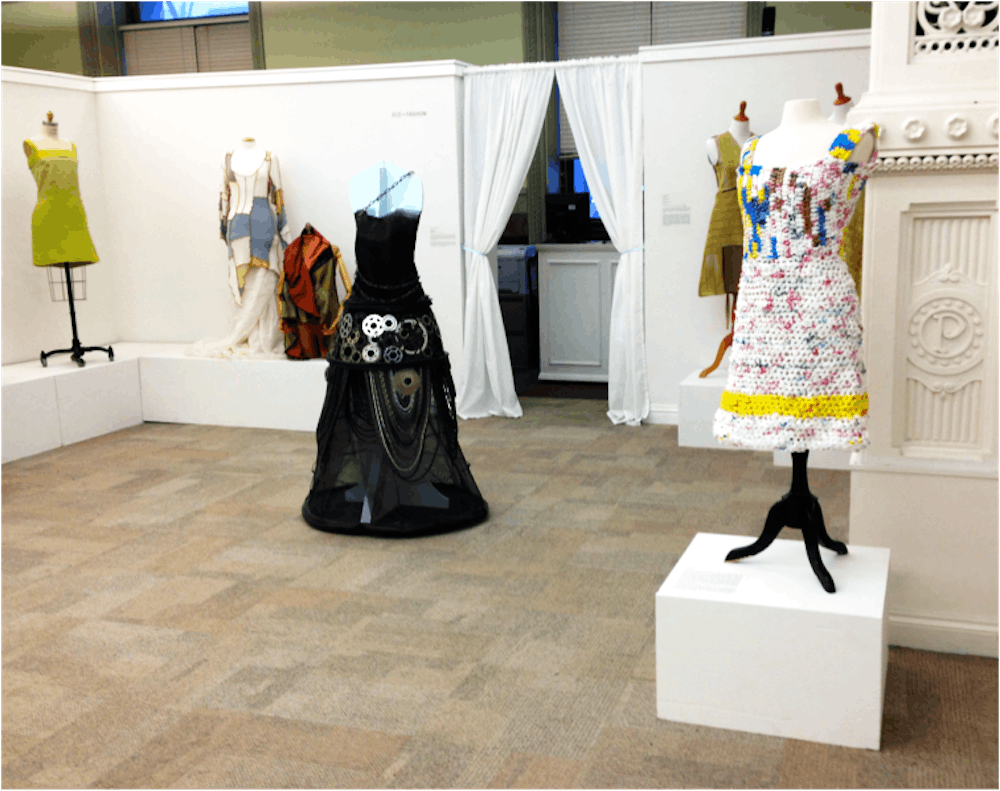From credit cards to bike chains to moss, ECO + FASHION at the Art Gallery at City Hall pushes the limits of what materials can be used in fashion. The pieces, designed by 18 Philadelphia–based artists, address the issues of sustainability and environmentalism in wearable (and not–so–wearable) art. Organized through the Art in City Hall program, the works will be on display through February 28th, 2014.
Many of the pieces incorporate found objects, recontextualizing everyday materials into art. Lauren Marsella highlights the contentious relationship between consumerism and sustainability in a pair of earrings resembling the American flag, made using credit cards. Marsella writes in the piece's description, “credit cards make convenient our impulse to consume and eventually discard, so that ingrained pattern can be halted by simply cutting them up.” In her work, Marsella collects odds and ends of contemporary culture and repurposes them into jewelry. In addition to credit cards, she has worked with currency and bullets.
The exhibition also includes works by Philadelphia Dumpster Divers, a group of more than 40 Philadelphia artists and collectors who have worked with found materials for more than two decades. Artist Ellen Benson views her clothing as a form of self-expression: “One of the great things about being an artist is that you can dress outrageously, colorfully, outlandishly, crazily—and it’s encouraged or even expected, especially because I am a Dumpster diva/member of the Philadelphia Dumpster Divers!” Her works in the show are certainly outlandish, composed of patches of different materials, including denim and flannel.
The show primarily consists of dresses, including Kendal Wilkins’ Cycle Crinoline. The Victorian–inspired piece is an intricate combination of bike parts, wire, screen door and tomato cages. The transformation from utility to beauty calls into question how we view the world around us. Another notable piece is Natalia Zuk’s “Moss Dress.” The live moss wrapping around the dress makes the garment seem as though it has a life of its own. The moss can be re–grown and replenished—the dress itself is a sustainable piece of nature.
The exhibition, while small, inspires the viewer to contemplate how they get dressed in the morning. When I wake up, I usually ask my roommates questions like, “Does this match?” or “Which shirt looks better?” When I think of clothing, the environment is far from my mind. However, as the eco–market grows, questions on materials, working conditions, and energy consumption in production should be at the forefront of designers’ minds. That being said, I don’t think I will be diving into dumpsters anytime soon.







